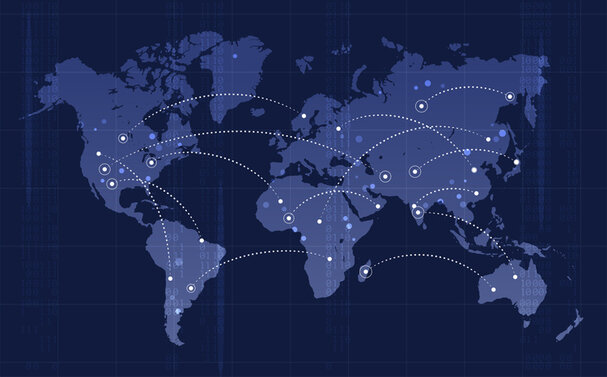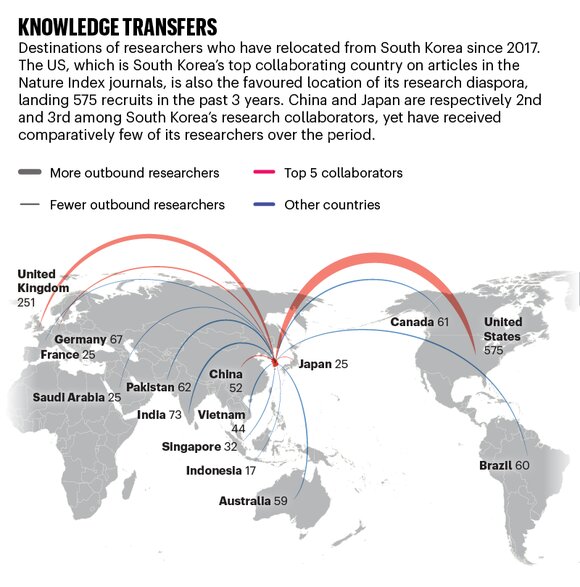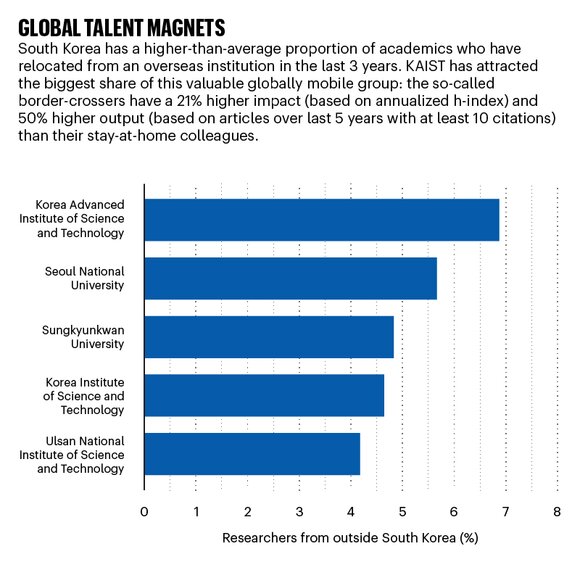
Credit: amtitus/Getty
South Korean institutions lure global talent
The country is making headway in the effort to internationalize its scientific workforce.
29 May 2020

amtitus/Getty
The proportion of academics who have relocated to South Korea from other countries in the past three years is higher than the global average, suggesting that the country’s drive to end its comparative scientific isolation may be bearing fruit.
“It’s becoming a hub for global talent,” says Paul McCarthy, chief executive of League of Scholars, an academic recruitment firm based in Sydney, Australia. The firm is using publication records to track mobility and productivity of more than 2 million researchers from around the world, including 26,697 researchers in South Korea, more than 95% of whom work in science and technology.
Author affiliations in the League of Scholars data set show that 4.3–4.9% of all academics in South Korea had moved from abroad between 2017 and 2020, whether foreign-born researchers relocating from elsewhere, or those returning home after working abroad.
That’s higher than the global average of 3.7%. The data on these globally mobile researchers indicate that the country has recently attracted an influx of productive and successful scientists, according to McCarthy.

High-impact scientists
Globally mobile researchers in South Korea tend to thrive. Researchers who relocated to South Korea since 2017 have been found to be more than 50% more productive than other academics in the country, measured by the median number of publications they authored or co-authored with at least ten citations in the previous five years.
They also have 39% more lifetime citations than researchers who remained in South Korea during the data-collection period. In another measure of performance, the median annualized h-index of globally mobile researchers in Korea is 21% higher than their colleagues who remained at home.
Researchers who tend to be internationally mobile are more productive wherever they are found, not just in South Korea, notes Cornelia Lawson, a science policy researcher at the University of Manchester, UK.
Lawson says that working abroad gives South Korean researchers important insights into what it takes to get published in journals with an international reach. South Korean researchers who publish largely or exclusively in domestically published journals tend to miss out on the exposure and citations that come with higher-impact journals, she says.
“A number of countries in Asia have a strong local publication culture,” she says. “Domestic scientists may not understand or feel the need to publish internationally.”
When it comes to sheer number of publications, however, home-grown researchers in South Korea can compare favourably with, or outperform, their colleagues from elsewhere.
A 2014 study published in the journal Minerva found that researchers with domestic degrees in South Korea, Hong Kong and Malaysia published more refereed papers and books or book chapters in the natural sciences, engineering and biomedical sciences than researchers holding foreign degrees.
Many of those papers were in domestic journals, where native researchers would have a clear publication advantage.
For Moon Kee Choi, a bioengineer who works on wearable and implantable electronic devices at the Ulsan National Institute of Science and Technology, the monthly ‘happy hour’ at the University of California, Berkeley (UC Berkeley), where she was a postdoctoral researcher from 2017 to 2019, was a career boon.
Bioengineers exchanged ideas while buying snacks and drinks. “Many people in South Korea collaborate with others, but until now, that collaboration is largely domestic,” she says. “Doing an international postdoc is a good way to make connections.”

‘Boomerang’ researchers such as Choi, who return home to South Korea, often have experience with both domestic and international publishing, and benefit from broader networks and more opportunities for international collaboration, she says.
For Choi, those collaborations have translated into publications. In 2019, she co-authored a paper on molybdenum sulfide capsules for cellular microscopy with three UC Berkeley researchers.
Sanghyuk Wooh, a materials scientist who studies surfaces at Chung-Ang University in Seoul, suggests that intense competition that rewards higher achievers is another reason why Korean ‘boomerang’ researchers may be especially productive and impactful.
Wooh completed a postdoc at the Max Planck Institute for Polymer Research in Mainz, Germany, before returning to South Korea in 2017. South Korean PhD graduates going on to postdoctoral positions in foreign countries tread a well-travelled path, but the return trip is more challenging, he says.
“Most of the researchers who go overseas want to come back to South Korea,” he says. “But there are a limited number of faculty positions, so it’s very competitive.”
Reaching out
The path may be somewhat easier for foreigners. The government has made a concerted push to attract and retain international talent in recent years, including several special initiatives to hire overseas researchers.
One example is the World Class University Project, a programme that started targeting high-profile international researchers in 2008.
International researchers hired through such schemes often have a relatively easy path to promotion, says Stephanie Kim, a higher-education researcher at Georgetown University in Washington DC, who authored a 2016 study of Western academics at South Korean universities. They also enjoy fringe benefits, including, in some cases, free housing.
On the downside, they are not always well integrated into the rest of the university. “They have some advantages, but they are also marginalized and sequestered,” says Kim.
Still, she adds, the resources and support can make South Korea an especially rewarding place to do research. “Unlike the United States, where funding for higher education is always dwindling, there’s actually money being poured into the higher-education sector in South Korea,” says Kim.
Although the League of Scholars data suggest that South Korea is making headway in an attempt to internationalize, Lawson notes that the country still lags behind other countries in terms of the diversity of its research faculty.
According to a 2019 report by the Organisation for Economic Co-operation and Development, only 6.3% of research faculty at South Korean universities in 2017 were foreign-born, a slight drop from previous years. By comparison, 28% of full-time science and engineering faculty in the United States were born elsewhere, according to a 2018 report from the US National Science Foundation.
This story is part of Nature Index 2020 South Korea. See more stories here.
